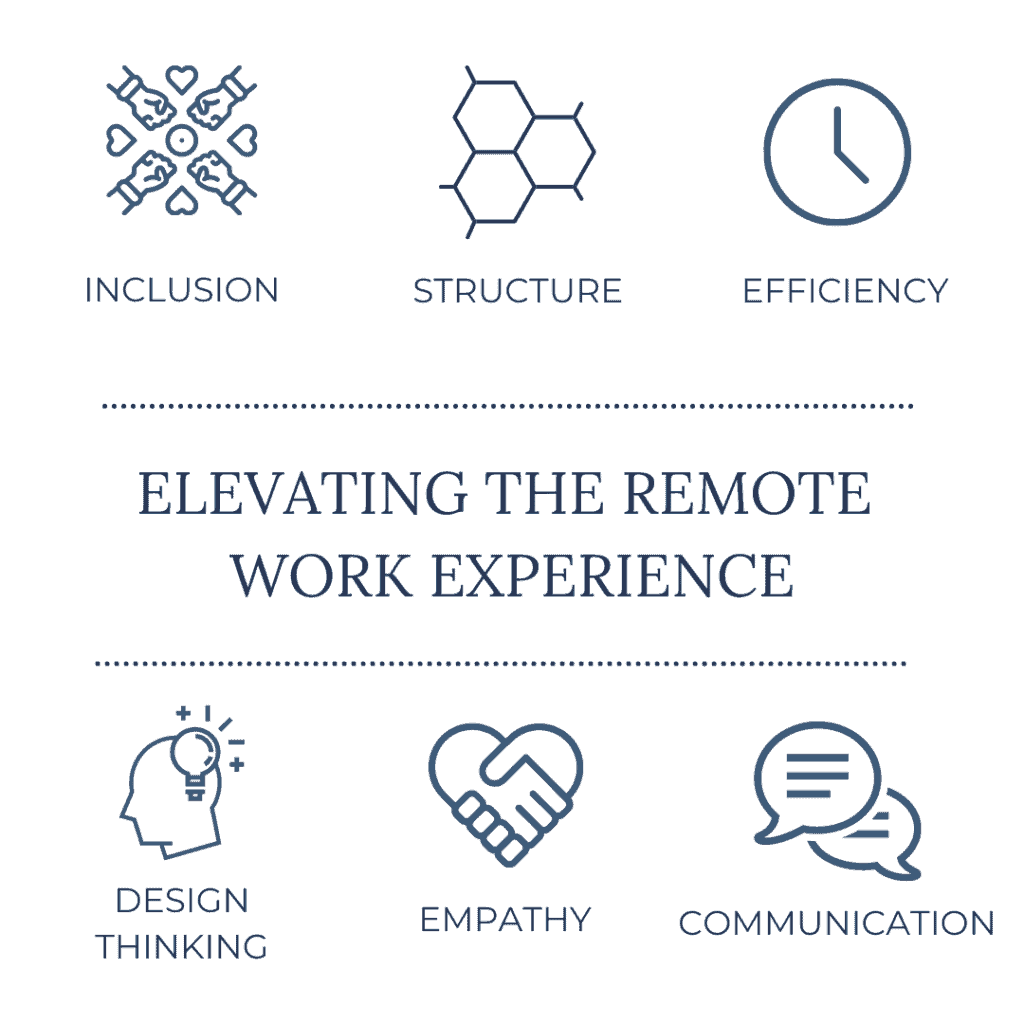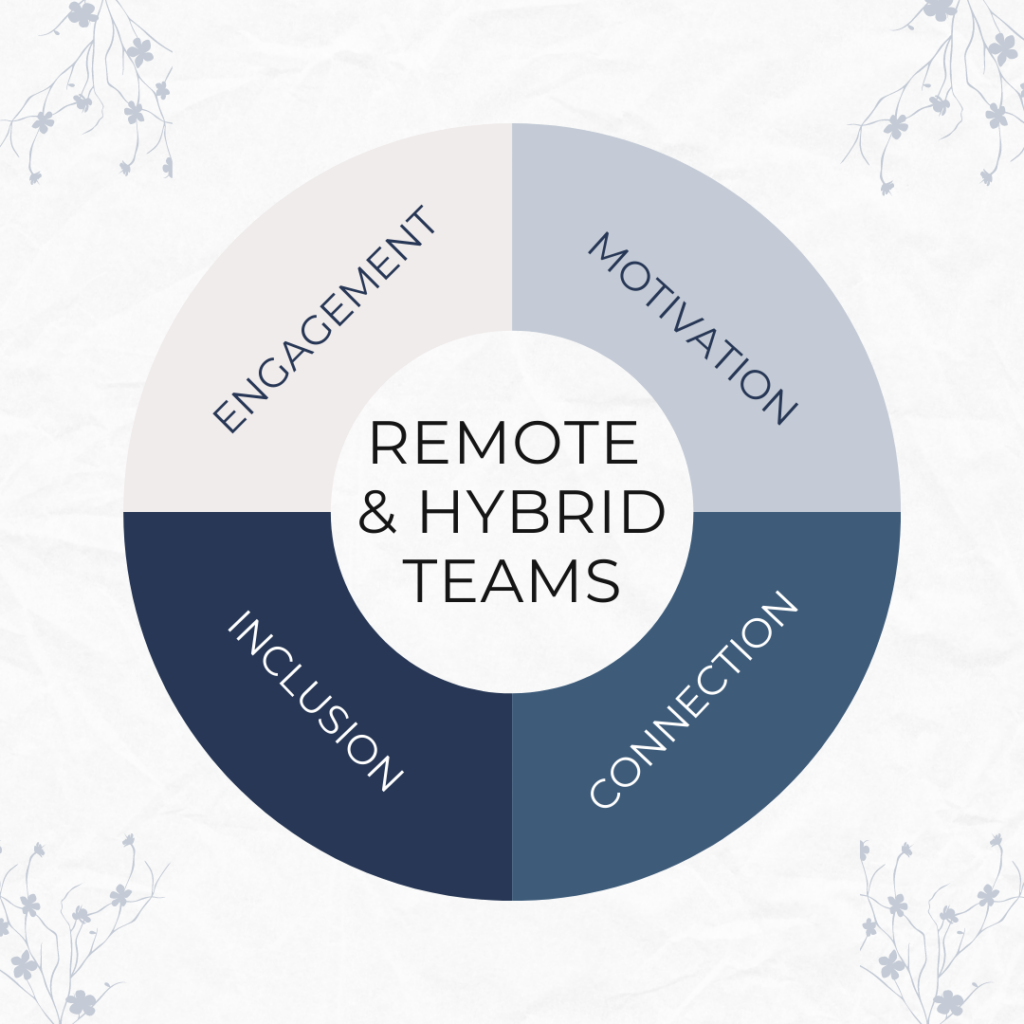The expansion of remote work has impacted the way leaders and companies operate. While many companies had already been operating remotely to some degree, key considerations for the employee experience are worth revisiting.
Before implementing a remote or hybrid work model, companies may gauge employee preferences via surveys. However, this may not always reveal every possibility. As Henry Ford stated:
“If I had asked people what they wanted, they would have said faster horses.”
Experimentation and iteration can reveal additional insights that are not explicitly shared. As different work models are tested and deployed (e.g. onsite, remote, hybrid, etc.), companies need to think about how to equitably compensate, promote, and integrate employees.
Empathy for different preferences, personality types and abilities is key to enhancing the employee experience. For instance, introverts who work remote may be overlooked or seen as disengaged. Leaders who understand, include, and empower talent can positively impact the employee experience.
In addition, re-branding “remote” work as “digitally-driven” work can minimize perceptions that remote employees are in a separate category. It can also signal that the company is thinking about “digital first”, rather than only remote vs. onsite. In other words, remote indicates location; digital indicates strategic priority.
As companies experiment and align on remote work and employee experience, they can ask:
- How do we keep team members motivated and inspired in a virtual or semi-virtual environment?
- How do we create a sense of community and belonging, and measure performance across the board?
- What are gaps between the remote work and employee experience?
- How can remote team members feel visible and valued?
Design thinking can be a valuable approach to solving this challenge. The experience can be reimagined entirely, starting with the employee at the heart of the design. First empathize with employees, ask key questions and learn about their pain points. Then define the problem, brainstorm, prototype and test ideas. This will be an iterative process as different needs are considered.
As an example, if an employee feels passed over for promotion because they are remote, we can reframe the problem statement as:
How might we create a performance management process that is inclusive (of remote employees)?
With any model, there are opportunities to streamline work, re-engage, and revamp the employee experience.
Reflect on questions including:
- How does work get done?
- What are the approval mechanisms?
- How is the team structured?
- How are employees collaborating?
- What structures and processes enable/hinder work?
- How can work get done more efficiently?
- What meetings are essential?
- What work is essential?
- How can we be mindful of mental health during these changes?

Key Considerations for Remote Work and Employee Experience
An elevated employee experience bakes in flexibility, curiosity, inclusion, connectedness and care. Key considerations include the following:
Work on Self
Leaders need to be continually working on their own self-awareness and human-centric skills to drive change. Show up with curiosity and empathy so employees feel safe sharing their perspectives and challenges.
Examine Structure
Examine onboarding and assimilation, and how teams are formed. What is the onboarding and assimilation process? How do both remote and onsite employees feel about the team structure? How efficiently is work getting done? Where can work be streamlined?
Evaluate Culture
- Drive inclusion and belonging. Is everyone present and participating in meetings? Are they being invited to the conversation? Do they feel a sense of belonging? Who is dominating the conversation? Who is not speaking up and why? How can diverse perspectives be heard? What other channels are available to share insights? How do employees get equitable access to opportunities?
- Evaluate which meetings are really necessary and make meetings more productive. Shorten meeting duration and eliminate “filler” meetings to drive efficiency and prevent burnout
- Virtual events and happy hours are one way to connect teams. However, as team members feel screen fatigue or obligated to attend yet another meeting, think of ways to repurpose existing meetings to connect and share experiences. Meetings over the phone can also be a welcome break from video
- Give people the gift of time instead of another activity. Time is valuable, and activities should not necessarily be mandatory
Reimagine the Employee Experience
- Leveraging design thinking principles, reimagine the employee experience by putting the employee at the center of the design. Select a diverse group of employees and map out their journeys. What are their pain points? What emotions do they experience at each stage? What do they value? Why? Understanding the problem first is pivotal to finding meaningful solutions
- Most importantly, communicate, check in, show you care, and actually care
Summary
Keeping remote and hybrid teams engaged and connected can be challenging. By empathizing with employees and inviting them to the conversation, leaders can gain a more holistic view of the employee experience. Leaders with emotional intelligence, courage, and genuine empathy can build bridges of understanding that transform the employee experience.
Copyright © 2021 Manisha Dhawan. All rights reserved.
For more inspiration and tips, please follow me on LinkedIn.

Manisha Dhawan, Founder and CEO of MPath Coaching, is a certified professional coach (CPC), MBA and management consultant with 2 decades of experience leading digital innovation and change management initiatives across multiple industries. As a design thinking specialist and lifelong learner, Manisha is passionate about empowering executives to advance leadership skills, maximize team potential, and drive innovation forward. In addition to corporate coaching, Manisha works with professionals on career strategy and human skills development.

